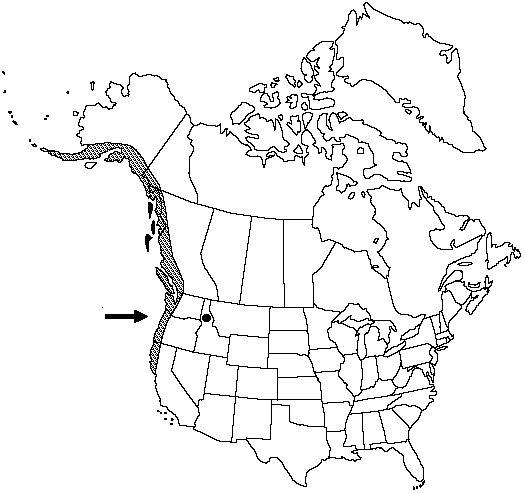Difference between revisions of "Polypodium glycyrrhiza"
Amer. J. Sci. Arts ser. 2, 22: 138. 1856.
FNA>Volume Importer |
FNA>Volume Importer |
||
| Line 12: | Line 12: | ||
|name=Polypodium aleuticum | |name=Polypodium aleuticum | ||
|authority=A. E. Bobrov | |authority=A. E. Bobrov | ||
| + | |rank=species | ||
}} {{Treatment/ID/Synonym | }} {{Treatment/ID/Synonym | ||
|name=Polypodium falcatum | |name=Polypodium falcatum | ||
|authority=Kellogg | |authority=Kellogg | ||
| + | |rank=species | ||
}} {{Treatment/ID/Synonym | }} {{Treatment/ID/Synonym | ||
|name=Polypodium occidentale | |name=Polypodium occidentale | ||
|authority=(Hooker) Maxon | |authority=(Hooker) Maxon | ||
| + | |rank=species | ||
}} {{Treatment/ID/Synonym | }} {{Treatment/ID/Synonym | ||
|name=Polypodium vulgare subsp. occidentale | |name=Polypodium vulgare subsp. occidentale | ||
|authority=(Hooker) Hultén | |authority=(Hooker) Hultén | ||
| + | |rank=subspecies | ||
}} {{Treatment/ID/Synonym | }} {{Treatment/ID/Synonym | ||
|name=Polypodium vulgare var. falcatum | |name=Polypodium vulgare var. falcatum | ||
|authority=(Kellogg) H. Christ | |authority=(Kellogg) H. Christ | ||
| + | |rank=variety | ||
}} {{Treatment/ID/Synonym | }} {{Treatment/ID/Synonym | ||
|name=Polypodium vulgare var. occidentale | |name=Polypodium vulgare var. occidentale | ||
|authority=Hooker | |authority=Hooker | ||
| + | |rank=variety | ||
}} | }} | ||
|hierarchy=Polypodiaceae;Polypodium;Polypodium glycyrrhiza | |hierarchy=Polypodiaceae;Polypodium;Polypodium glycyrrhiza | ||
| Line 51: | Line 57: | ||
-->{{#Taxon: | -->{{#Taxon: | ||
name=Polypodium glycyrrhiza | name=Polypodium glycyrrhiza | ||
| − | |||
|authority=D. C. Eaton | |authority=D. C. Eaton | ||
|rank=species | |rank=species | ||
| Line 66: | Line 71: | ||
|publication year=1856 | |publication year=1856 | ||
|special status= | |special status= | ||
| − | |source xml=https://jpend@bitbucket.org/aafc-mbb/fna-data-curation.git/src/ | + | |source xml=https://jpend@bitbucket.org/aafc-mbb/fna-data-curation.git/src/eaa6e58056e40c9ef614d8f47aea294977a1a5e9/coarse_grained_fna_xml/V2/V2_269.xml |
|genus=Polypodium | |genus=Polypodium | ||
|species=Polypodium glycyrrhiza | |species=Polypodium glycyrrhiza | ||
Revision as of 19:46, 16 December 2019
Stems not whitish pruinose, slender to moderately stout, to 6 mm diam., intensely sweet, licorice-flavored; scales concolored, brown or slightly darker near point of attachment, lanceolate to lanceolate-ovate, symmetric, margins entire. Leaves to 75 cm. Petiole usually slender, 0.5–2 mm diam. Blade lanceolate-ovate to oblong, pinnatifid, widest near middle or just below, to 16 cm wide, herbaceous, rarely slightly leathery; rachis sparsely scaly to glabrescent abaxially, puberulent adaxially; scales linear, usually less than 3 cells wide. Segments linear to oblong, less than 12 mm wide; margins serrate; apex acute to attenuate; midrib puberulent adaxially. Venation free. Sori midway between margin and midrib or slightly closer to midrib, usually less than 3 mm diam., circular to oval when immature. Sporangiasters absent. Spores less than 58 µm, verrucose, with surface projections less than 3 µm. 2n = 74.
Phenology: Sporulating late fall–spring.
Habitat: Cliffs and rocky slopes along coasts, often epiphytic, on a variety of substrates
Elevation: 0–700 m.
Distribution

B.C., Yukon, Alaska, Calif., Idaho, Oreg., Wash., Asia in Kamchatka in the former Soviet republics.
Discussion
Polypodium glycyrrhiza hybridizes with P. calirhiza and with P. hesperium to produce sterile triploids with misshapen spores. Polypodium glycyrrhiza was involved in the origin of both of these allotetraploid species, and some individuals can be difficult to identify. Free versus anastomosing venation distinguishes this species from P. calirhiza; the presence of adaxial hairs on the rachis separates it from P. hesperium. An additional character for distinguishing these taxa is spore length, which is less than 58 µm in diploid P. glycyrrhiza and more than 58 µm in the two tetraploid species. Reports of P. glycyrrhiza occurring in Arizona (T. Reeves 1981; D. B. Lellinger 1985) are based on misidentified specimens.
Selected References
None.